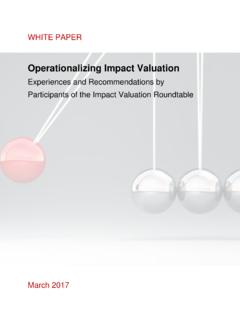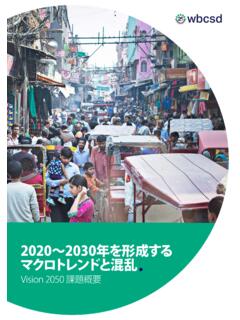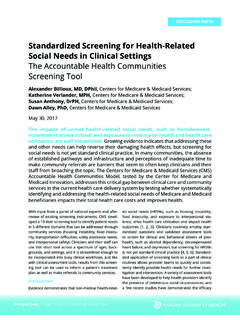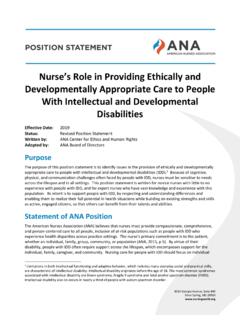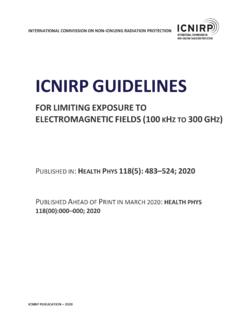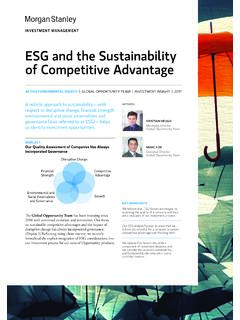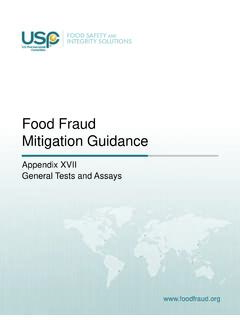Transcription of Guidelines for Environmental Social Impact Assessment
1 Guidelines FOR Environmental & Social Impact ASSESSMENTC ement Sustainability Initiative (CSI)CONTENTS1 Introduction 82 Context 10 An introduction to Environmental and Social Impact Assessment 11 The importance of an ESIA to project implementation 11 Management considerations 113 International standards
2 164 The ESIA process Overview Project description The screening phase The scoping phase Overview The scoping exercise Scoping report Baseline Overview
3 Physical studies Biodiversity Socio-economic studies The importance of karst environments in cement production The baseline report 55 Impact Assessment Overview Alternative options Measuring potential change Significance of change Mitigating adverse change Residual impacts
4 Cumulative impacts The ESIA report 645 Stakeholder engagement Why engage with stakeholders? Who are the stakeholders in an ESIA process? The principles and objectives of stakeholder engagement Techniques for stakeholder engagement 746 Environmental and Social management and monitoring The purpose of an Environmental and Social Management Plan (ESMP) What should be included in an ESMP?
5 Verification and reporting Environmental and Social monitoring 827 Practical considerations 868 Appendices 88 Case studies1 Synergies of an ESIA, from a traditional to an integrated approach 142 ESIA for a greenfield project in a developing country according to international standards 183 More than meets the eye.
6 Emissions (bio-) monitoring, dispersion and risk analysis as innovation tools 444 Rehabilitation of the Cortijo Nuevo gravel pit by planting integrated organic citrus trees, with landscape integration 625 Resource conservation by co-processing of hazardous waste in India 666 Impacts of local and political aspects in the ESIA process 707 Why fuels in cement are so controversial and what should be done about it: ESIA as an instrument for stakeholder involvement 76 INTRODUCTION0101 Introduction 9 Guidelines for Environmental & Social Impact Assessment (ESIA)The Cement Sustainability Initiative (CSI) is a global effort by leading cement producers who believe there is a strong business case for the pursuit of sustainable development.
7 Collectively, these companies account for around 30% of the world s cement production. The CSI is an initiative of the World Business Council for Sustainable Development (WBCSD). The CSI has developed this document to guide the preparation of an Environmental and Social Impact Assessment (ESIA), replacing the earlier Guidelines published in Guidelines have been prepared to reflect international good practice. Cement and aggregates industry operators (existing and future) are encouraged to use the guidance to inform the development of an ESIA as part of the process required to secure governmental permissions for the implementation of new investments and expansions to existing operations objective of this document is to guide users through the ESIA process, in accordance with international good practice.
8 It offers a practical guide for all projects both large and small scale. The Guidelines are intended for use by both ESIA practitioners and project decision-makers. Where relevant, the document references the CSI Charter. CSI member companies are all signatories of the Charter , which lays out a suite of actions to be carried out by companies as part of their contribution to sustainable development. These actions relate to several topics that should be addressed in an ESIA, for example, CO2 and other emissions, responsible use of fuels and raw materials, employee health and safety, and impacts on water and Context 11 Guidelines for Environmental & Social Impact Assessment (ESIA) An introduction to Environmental and Social Impact Assessment An Environmental and Social Impact Assessment (ESIA) should be seen as a process that starts at the conceptual design stage of a project and continues throughout project construction, operation and decommissioning.
9 During the process, several deliverables are prepared to guide the activities of the specific purpose of an ESIA is to identify the positive and negative impacts caused by project implementation. This is assessed through an analysis of the effects resulting from interaction between Environmental and Social components and the various activities of a project and its development, including temporary (for example, during construction) and associated facilities are defined by the International Finance Corporation (IFC) as facilities that are not funded as part of the project and that would not have been constructed or expanded if the project did not exist and without which the project would not be viable (IFC 2012).ESIAs vary in scope and type of analysis, depending on the characteristics of the proposed project.
10 In doing so, each element of a project should be analyzed for its potential to affect the environment and/or society during each phase of the project (including construction, operation and decommissioning).ESIAs address a project s Environmental and Social costs and benefits, including an appraisal of the economic implications of the proposed project. The ESIA should consider the project as designed, in addition to potential alternative options (including that of no action).In addition to the direct effects outlined above, the possible interactions between different Environmental components (indirect effects) should also be considered, together with the impacts that could occur in conjunction with other activities taking place in the near vicinity at the same time (cumulative effects). The importance of an ESIA to project implementationJurisdictions in most countries around the world require an ESIA to be undertaken before authorization (for example, permitting, licensing, planning consent) for certain types of projects is granted.

